Are you a Quiet Speculation member?
If not, now is a perfect time to join up! Our powerful tools, breaking-news analysis, and exclusive Discord channel will make sure you stay up to date and ahead of the curve.
Let's not waste time and dive right into what makes blue in a cube!
Strengths:
Countless articles have been written about why card advantage wins games but, to summarize, card advantage gives players more resources to win the game. No color in the game is better at achieving card advantage, specifically raw card draw, than blue.
Many colors rely on more indirect methods, like Krosan Tusker or Staggershock. However, blue's card drawing cards are some of the most efficient and direct ways. All 3 of the monoblue planeswalkers support this theme and even ignoring broken cards, like Ancestral Recall, blue's card advantage tools are second to none:
Blue also has some of the most powerful card selection tools in the game. Ponder and Brainstorm were restricted in Vintage because their ability to look through the library for powerful individual cards. Cube provides the same opportunities with a variety of these effects:
Removal effects are very valuable in cube as they allow the controller to neutralize powerful threats. While blue has no way to directly remove creatures outside of Psionic Blast, it does have a few ways of dealing with opposing creatures.
Tempo effects, mainly those that return permanents to the owner's hand (that is, “bounce” effects) are useful because they can temporarily remove a troublesome permanent, often a creature, from the battlefield at a relatively cheap cost. While the solution is by no means permanent, the tempo gained is often worth the cost of having a temporary solution.
“Theft” (or "Control Magic") effects allow blue decks to take control of opposing threats; neutralizing them while gaining one.
Many blue decks seek to gain control of the game by neutralizing, at least temporarily, opposing threats and creating a dominant board position. Blue's creatures seek to end the game by having a combination of evasion and a way to protect themselves. This makes it so that the opponent can't simply aim a removal spell at a card that's meant to end the game on its own.
Blue's other major strength is in its unique ability to neutralize threats while they are on the stack by means of countering spells. Only blue has the ability to stop cards from taking effect at all.
Blue also has many cards that are excellent with artifacts. Many of the artifact-based mana acceleration, like the Signets from Ravnica block and Mind Stone, are perfect for blue-based control strategies. Artifacts and artifact-centered cards are typically a strong component of blue-based decks.
Weaknesses:
A major weakness of blue is that it is a very slow color. It is not very good at playing an aggressive role because of its 1- and 2-drop creatures are not very efficient at dealing damage quickly: there are no Elite Vanguard or Oona's Prowler equivalents in blue! Even a majority of its early creatures are meant to ultimately aid a player in a long-term strategy, not ending the game as quickly as possible.
Due to this slowness, blue archetypes are vulnerable to disruptive strategies and strong, early pressure from aggressive decks.
Many blue decks ultimately wait until the later stages of the game to enact their game plan. A well-timed Molten Rain, Tangle Wire, or Dwarven Blastminer can provide enough of a tempo disruption to make a blue mage lose the game. Disruption by means of discard, through Hymn to Tourach or Duress, can also provide sufficient disruption.
Opportunities and Treats – Archetypes:
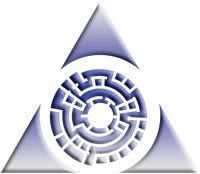
Blue-White (Azorius) – Control
Azorius control is one of the classic archetypes in Magic. Blue's major strengths all encompass areas that white does not have, making blue a very good complement. The basic gameplan of Azorius control is to make beneficial one-for-one trades (my Swords to Plowshares for your Tarmogoyf, my Counterspell for your Garruk Wildspeaker, etc.) in the early game.
Blue's card advantage help Azorius decks hit the long-term game strategy by making it so that they can get a large improvement from the 1-for-1 trades made in the early parts of the game. Because of this, blue's more expensive card advantage tools like Desertion and Form of the Mulldrifter are good in Azorius control, since the deck plays a long game, making it so that the payoff from these expensive cards happens often. Blue's “bounce” cards like Venser, Shaper Savant can assist white's creatures with enter the battlefield triggers, in addition to white's own bounce cards like Kor Skyfisher and "blink" cards like Flickerwisp and Venser, the Sojourner, allowing the deck to recycle triggers on cards like Cloudgoat Ranger to generate card advantage.
Due to the fact that white's creature-removal suite contains some of the most efficient removal spells in the game, cards like Control Magic aren't as necessary as they are in other blue-based decks.
Countermagic helps Azorius decks deal with opposing threats, especially red direct damage which can be particularly painful when an Azorius player is at a low life total. Counterspells can also help to protect white's army of planeswalkers as well as several card advantage machines in blue's own Jaces and Tezzeret, the Seeker. Similarly to blue's card advantage, Azorius decks are able to utilize more expensive counterspells like Calculated Dismissal and Draining Whelk because of the longer game state.
Dimir decks play similarly to Azorius decks in that both seek to prolong the game through 1-for-1 card trades and win through a long battle of attrition and eventual card advantage, and many of the same cards overlap here. However, black's methods of achieving this route to victory are slightly different and blue's role takes advantage of this and increasing the removal available: “bounce” effects are useful with creatures like Grave Titan, Shriekmaw, and Skinrender.
Blue's card selection tools, especially those that place cards in the graveyard like Enclave Cryptologist, Looter il-Kor, and Frantic Search, are extremely useful with reanimation effects, like Recurring Nightmare and Animate Dead, as this combination allows a player to cheat a creature like a Myr Battlesphere, Sphinx of Jwar Isle, or a Sphinx of the Steel Wind into play much earlier than it could be played. Even without reanimation effects, blue's card selection and card draw tools are useful for helping a Dimir deck ultimately achieve control and win a long game.
While red typically plays an aggressive role in cube, Izzet decks are able to temper red's arsenal of burn spells and 2-for-1 creatures into a powerful control strategy with some help from blue.
Many of red's burn spells like Burst Lightning and Flametongue Kavu can destroy creatures with 4 or less toughness, but it has a harder time dealing with creatures bigger than that, with only X-spells like Delayed Blast Fireball can destroy opposing titans and dragons. Cards like Control Magic and Agent of Treachery can help red decks deal with those creatures, and blue's plethora of cheap card advantage and selection help decks quickly find burn spells to destroy smaller creatures.
Blue's array of counterspells can also deal with anything that isn't a creature or an artifact, as permanents like enchantments are difficult for red to remove from play. Red can deal with planeswalkers through burn spells like Lightning Bolt, but being able to prevent a planeswalker from even being able to use any ability is extremely nice for an Izzet deck.
The best Simic decks are tempo-oriented machines, disrupting the opponent with cheap countermagic and removal while bashing with efficient creatures.
Blue provides a way to shore up one of green's major weaknesses: its inability to directly deal with creatures outside of combat. Cards that provide tempo, such as Aether Adept and Memory Lapse, may only temporarily prevent threats from being on the battlefield but the strategy of efficient creatures and cheap disruption uses these temporary effects to clear a path for creatures like Kodama of the North Tree to win the game quickly.
Blue's powerful suite of “theft” effects give Simic decks other tools to directly deal with troublesome permanents. Due to green's mana acceleration, Simic decks are able to easily circumvent having to tap out for spells like Control Magic and Agent of Treachery. It also help Simic decks accelerate into blue's large, difficult to answer threats like Frost Titan and Keiga, the Tide Star.
A more subtle effect is that green's acceleration through land-searching cards like Sakura-Tribe Elder, Yavimaya Elder and Krosan Tusker makes blue's already-strong card draw effects even better,since these cards decrease the probability of drawing a land and provide shuffle effects to change the cards on top of the library. Since green doesn't get much in the way of pure card draw, outside of Harmonize and Sylvan Library, this strength is especially important for Simic decks.
Monoblue decks are the prototypical control deck and a good mono-blue deck can be a fearsome deck to see in a cube draft. Monoblue seeks to gain card advantage, creature theft and seek to win through a hard to answer creature, essentially playing it's own strengths to their peak. Since these decks lack a true mass-removal effect, they must rely on artifact-based ones like Oblivion Stone or Nevinyrral's Disk to destroy a horde of opposing threats, usually creatures.
However, since a monoblue deck can focus on its strengths–card draw, permanent theft, card selection, and counterspells–it can be a formidable foe due to high redundancy, similar to how a monored deck can be a formidable foe because of the redundancy in having many, many burn spells.
Analysis:
An examination of blue's archetypes shows that it is almost solely control-based, three out of its four archetypes are control-based with only Simic (and arguably Izzet) being midrange. However, as blue is often an incredibly strong color it is important to make sure these decks are not taking over your entire cube; fighting this common experience, however, happens mainly through making the other colors play to their strengths better, not by directly weakening blue.
Stay tuned for next week when I will perform a SWOT analysis on black, a color that, like white, is adept at both aggressive and control strategies and how to make black perform both these tasks optimally.
Thanks for reading!
My twitter account: @UsmanTheRad
My cube blog: idratherbecubing.wordpress.com
My cube podcast: The Third Power


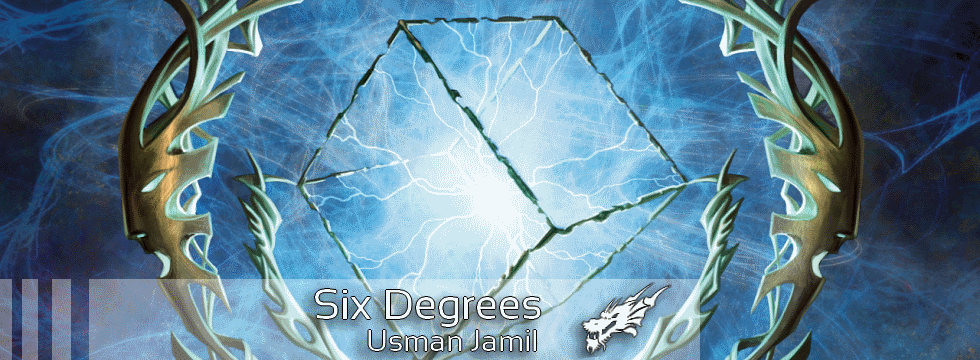
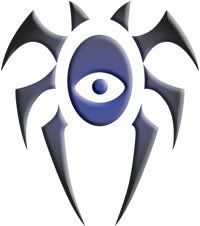
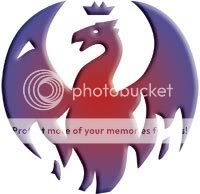
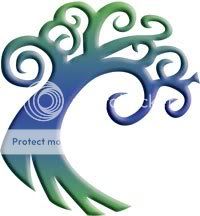



U/x Tempo is probably one of my recent favorites to play in the cube. I've been trying to swap a couple cards here and there to push the archetype but it's hard trying to determine what cards will stand on their own. I've been having a blast drafting U/G tempo as most of the cards are pretty under-drafted in my playgroup (man-o-war, aether adept, temporal spring, plow under). Last draft I was able to kick Jilt with my City of Brass as well as a T2 Plow Under with a Mana Vault. I'd definitely say it's my favorite archetype at the moment.
One other thing to think about: most of the totally, utterly broken cards are in Blue. Ancestral Recall, Time Walk, Timetwister, Force of Will…
Remarkable! Its actually remarkable paragraph, I have got much clear idea regarding from this paragraph.